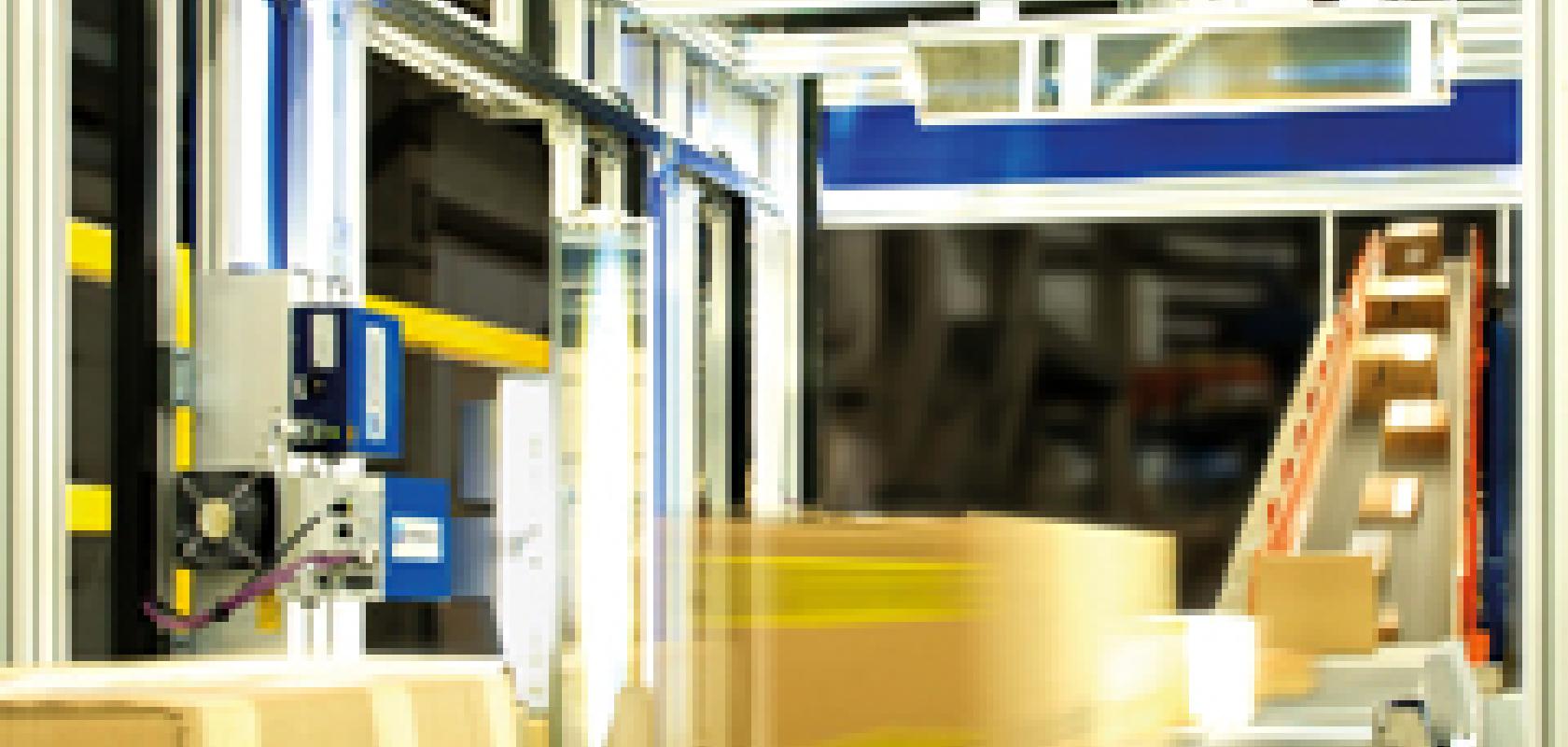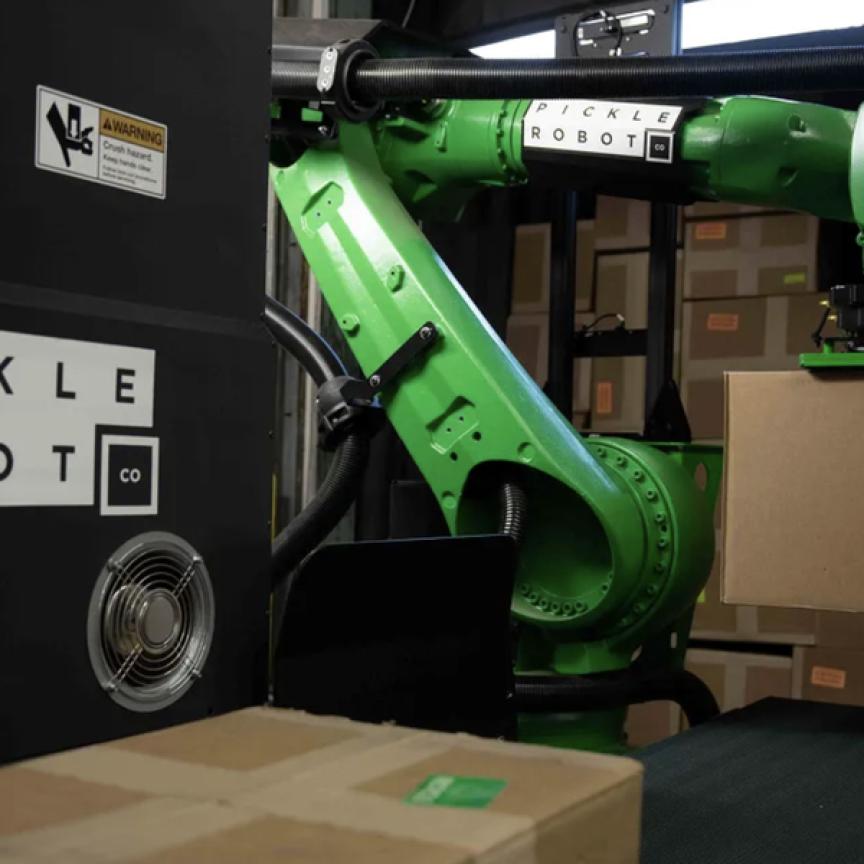Vision systems are beginning to revolutionise the logistics industry, enabling parcels to be read faster and with greater accuracy, and helping the express logistics firms – and their retail customers – to benefit from later and later cut-off points for next day delivery.
The numbers involved in international logistics are simply mind boggling. Christmas means the busiest time of the year for post and parcel shipments, be it a simple card or the entire Christmas present shop bought from Amazon at the last second. And while Black Friday is listed as the busiest sales day of the year, the busiest day for the logistics industry is almost three weeks later.
According to figures from FedEx, its busiest day each year falls on the second to last Monday before Christmas. FedEx says it shipped more than 290 million parcels between Black Friday and Christmas in 2014, and a twelfth of these (22.6 million) were during that single 24-hour period, on 16 December.
With delivery volumes on this scale, even an error of the order of a fraction of a per cent would lead to hundreds of thousands of mis-delivered or late parcels in the run up to Christmas, a level that is simply not acceptable for such carriers.
More than barcodes
Logistics companies have long relied on laser scanning to track parcels via 1D barcodes and control where they go, said Arnaud Destruels from Sony’s Image Sensing Solutions division. ‘Laser sensors are cheap and offer approximately 95 per cent read-rate accuracies,’ he noted. However, because they work by tracking the reflected light from a focused laser beam, if the code is damaged or warped, then the laser will not recognise it.
Conversely, said Destruels, an image-based system will deliver read-rates of more than 99.9 per cent, and they can be configured to read more than just a barcode. But re-engineering systems in warehouses takes both significant time and significant investment. Vision systems, which unlike lasers can also capture 2D barcodes, instead work by capturing a still of the complete barcode and running algorithms on this image to identify it – even if warped or only a small sliver is there.
Mark Ryder from Prime Vision, a machine vision firm specialising in systems for the logistics sector, pointed out that ‘costs increase exponentially as you get closer to that magic 100 [per cent]. It’s therefore about understanding when [a first-pass read rate of] 90 per cent is ok, and when 100 per cent is necessary.’
As Ryder is keen to highlight, there is a middle ground. While national postal carriers such as Royal Mail and Deutsche Post use vision systems with a 98 per cent first-read accuracy, ‘mid-market players are making the move from barcode-based systems to [a vision-based] one that adds more functionality and has more automation. This pragmatic solution is something that gets you to the 80-90 per cent level, and then you do the rest with video coding.’ Video coding is a process in which a still frame of the unreadable package is sent to an operator sitting at a remote PC, who can then key in the information while the package is still on the conveyor belt.
Ryder explained: ‘Provided the percentage [of no-reads] is relatively low, you can have just one or two operators doing this instead of investing all your money into the first high read rate.’
Getting the stock to the stores
Among those leading the move from laser- to vision-based systems is the logistics arm of a major UK-based fashion retailer. The company’s three Yorkshire-based warehouses receive 10,000 items each hour from across the globe, and the company has recently implemented Prime Vision’s optical character recognition (OCR) cameras, not only to improve accuracy, but also to avoid lost revenues from stock being stuck in the warehouse, especially in the peak sales season before Christmas.
While barcodes, which are shipped from the UK to the company’s suppliers, can be used to determine what specific clothing lines are in the logistics box, and to update the IT systems automatically, the pre-printed barcodes aren’t able to give quantity information. It was therefore up to the supplier to write this information on the box, which is where the system falls down. The supplier would need to take each box off the plane and input the information manually before shipping it to the stores. At 10,000 items each hour, this meant stock was kept in the warehouse for up to two additional days.
Now, 12 single-camera (Sick ICR890) OCR systems have been installed across the company’s three sites. With the cameras located at the side of the conveyor, automatically capturing the front face of the carton, the system locates both the machine printed data and the handwritten quantity information; in more than 90 per cent of cases the product then goes straight into stock and the stock management system is automatically updated.
This increased level of automation means that ‘no-reads’ can also get sent into stock using a video-coding solution, for manual data entry.
To increase accuracy further, the company has switched to light yellow labels – a colour invisible to its cameras – enabling the writing to stand out more. Prime Vision expects the system to be able to read handwriting from across the globe with less than 0.5 per cent incidence of error.
A different dimension
It should be said, however, that incorporating imaging systems into logistics handling has an additional effect. The German machine vision specialist Vitronic is among a handful of companies that are also using camera-based systems to record package dimension data.
This, according to Vitronic’s Torben Posert, results in data that can be used to undertake capacity planning, to optimise each vehicle’s load, and therefore to reduce the number of trips or the average weight of each vehicle.
Vitronic’s DWS system, for example, uses the VicamSsi2 autofocus line scan cameras running at 37kHz with either red or white LED illumination to achieve this. These cameras can work with conveyor belt speeds up to 4.5m/s and, combined with Vitronic’s software, are capable of capturing the parcel for OCR analysis, as well as measuring its dimensions to an accuracy of just 5mm in each plane.
These measurements are then combined with barcode information collated from the multi-camera OCR camera system, plus weight data from integrated in-motion scales, with the resulting data fed into the logistics firm’s capacity planning systems.
Meeting last-minute Christmas orders
The boom in online retailing has meant that next-day delivery is now the norm, and the last minute rush to the high-street is becoming easier to avoid.
Amazon UK, for example, offers next day delivery free to all Amazon Prime members for orders bought before 6:45pm, which has simply added pressure on its competitors and their logistics systems to offer the same, if not better. As Mark Ryder pointed out: ‘Over the next two years, people are not even going to want to wait for next day delivery,’ adding that customers also won’t be willing to pay for this improved service. Again, the pressure will be on the logistics operators to get quicker through automation.
Visions systems have a key role to play, as can be seen in Holland, where Post NL Parcel Service, the express logistics arm of the national mail carrier, is helping its customers extend the last order to as late as 3am. This huge leap has been achieved through its implementation of automation and vision systems, and a move to smaller, more localised sorting hubs. The shift was announced in May, with Post NL moving from three major centres to 18, 17 of which are already up and running.
According to Ryder, Post NL is among the most advanced in the world in terms of the level of automation, and in the way the company has re-engineered its whole network to do this.
Each of the sorting centres typically accepts parcels from 6pm, but the peak of activity is invariably from 11pm to 3am the following morning, with volumes frequently reaching more than 150,000 parcels to sort within a six-hour shift.
According to Post NL’s Gabby van der Arend, the key to managing these peaks and offering a 3am-last-order slot was primarily through improving the manual data entry process: ‘No matter how quickly the parcels are loaded onto the inducts, those that are not automatically read are stuck on the sorter until they are processed manually.’ A few years ago, Post NL would have 16 stations for operators to undertake the manual data entry, with each operator coding an absolute maximum of 550 parcels per hour, totalling 8,800 parcels at best – a long way off the sorting system’s capacity of 21,000 per hour.
To address this, Post NL implemented Prime Vision’s ParcelMatch system, which uses a 20kHz line scan camera system on a cross belt sorter that builds the images of each package from five sides. To allow a greater range of colours that the camera can capture, Prime Vision has also switched from the traditional red illumination to an LED system that emits both white and blue light, so the complete spectrum can be captured.
These images can then be used by the ParcelMatch system automatically to read either machine-printed or handwritten address details, 1D and 2D barcodes and/or article numbers automatically – and with a second recognition engine to look for stamps. This data can be captured for virtually any parcel size, shape and orientation.
Prime Vision’s technologies have an accuracy well above the human average, and accuracy is further increased through Prime Vision’s region-of-interest (ROI) finder, which uses a neural network and can be trained to recognise specific parcel and label characteristics.
Following capture, the system needs less than two seconds to undertake image analysis; because of the system’s automated post production of the images of the parcel’s five sides, the video coders need just 12 seconds per parcel.
According to Ryder, the system has enabled Post NL to double throughput at the facilities, to more than 1,000 parcels per operator per hour.
Delivering faster than Santa?
Given the Christmas theme of the article, it’s worth comparing the way logistics operate to the ultimate delivery service – Santa Claus. For the past 60 years, the US military’s radar monitoring division Norad (North American Aerospace Defense Command) has updated children with Santa’s position, originally via phone calls, but more recently via Google Earth and phone apps. And Norad’s programs show that Santa, like logistics services, uses the same model of regional distribution hubs, with lightning-fast sorting for more localised redistribution.
But Santa also has only a limited amount of space on the sleigh and will be reloading, with items being selected with exceptional accuracy and speed. While his elves might not be available to the likes of DHL, picking robots are, and these are already being used to replace people for the mundane and potentially dangerous tasks.
Amazon’s sorting facility in Robbinsville, New Jersey, for example, is already moving this way, using the company’s robots to move shelves around its facilities and to the human picker.
But Amazon is already researching ways to automate this final puzzle, with a competition held earlier this year to find a robot capable of picking products that would match a human’s abilities. Despite the $20,000 prize awarded, the company isn’t there yet, with the MIT Technology Review recording that: ‘Even the simplest products seemed to fool some of the 31 competing robots.’ According to one entrant from the University of Alberta, ‘thin paperback books caused us the biggest problem’, with its three-fingered robotic arm, and its ‘human-like range of motion’ finding them too thin to see and grasp.
Again, accurate vision systems will be required here, with robots needing not just to scan a barcode (or receive information via the RFID chips embedded in the products and shelves), but to sense-check and see if these products are what they say they are – and finally, to grasp and move them with the dexterity of a human hand.


